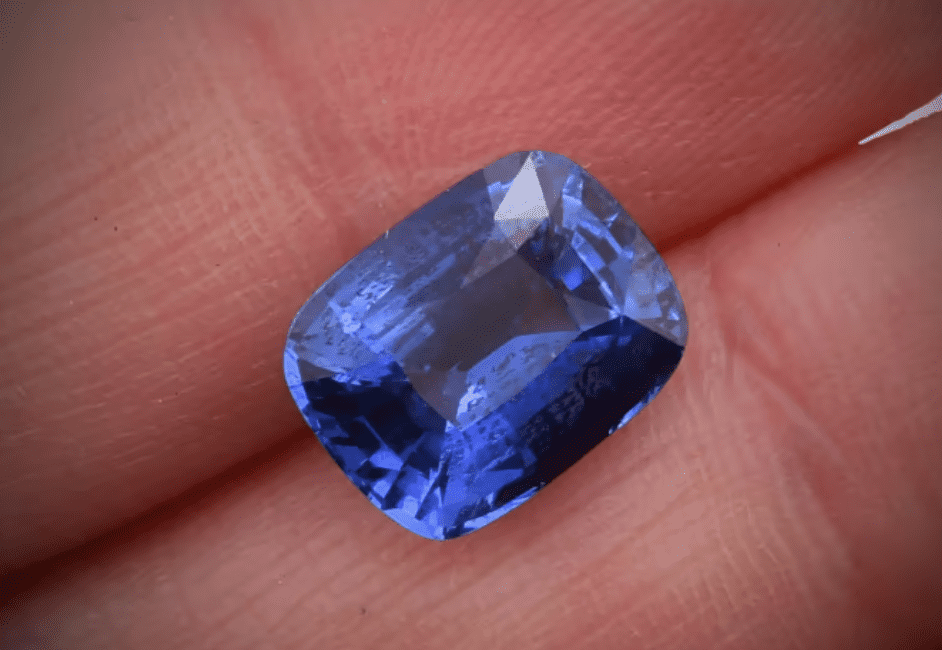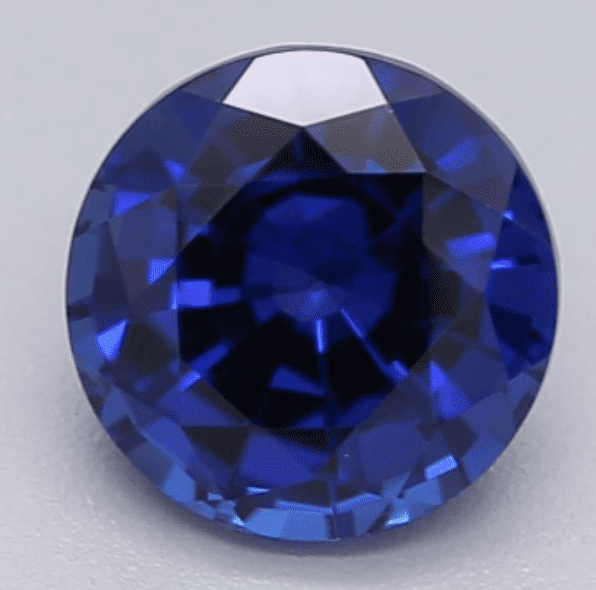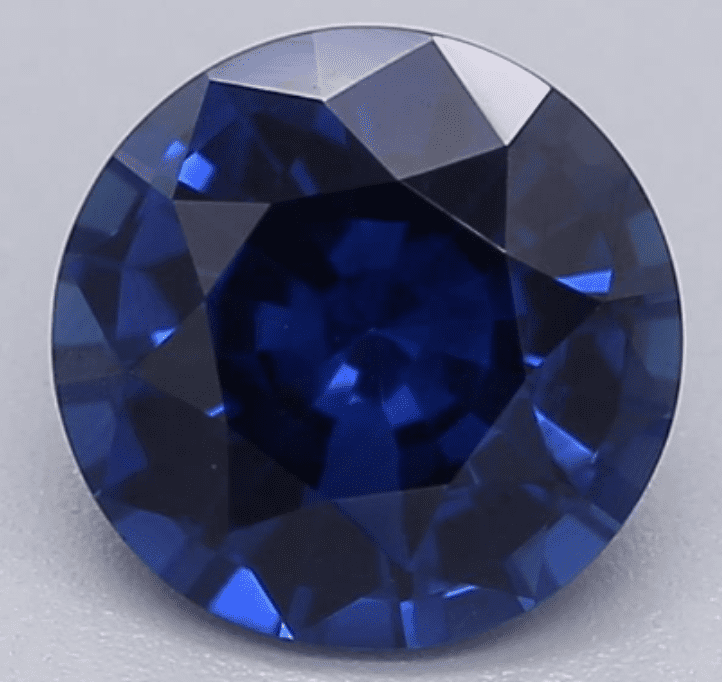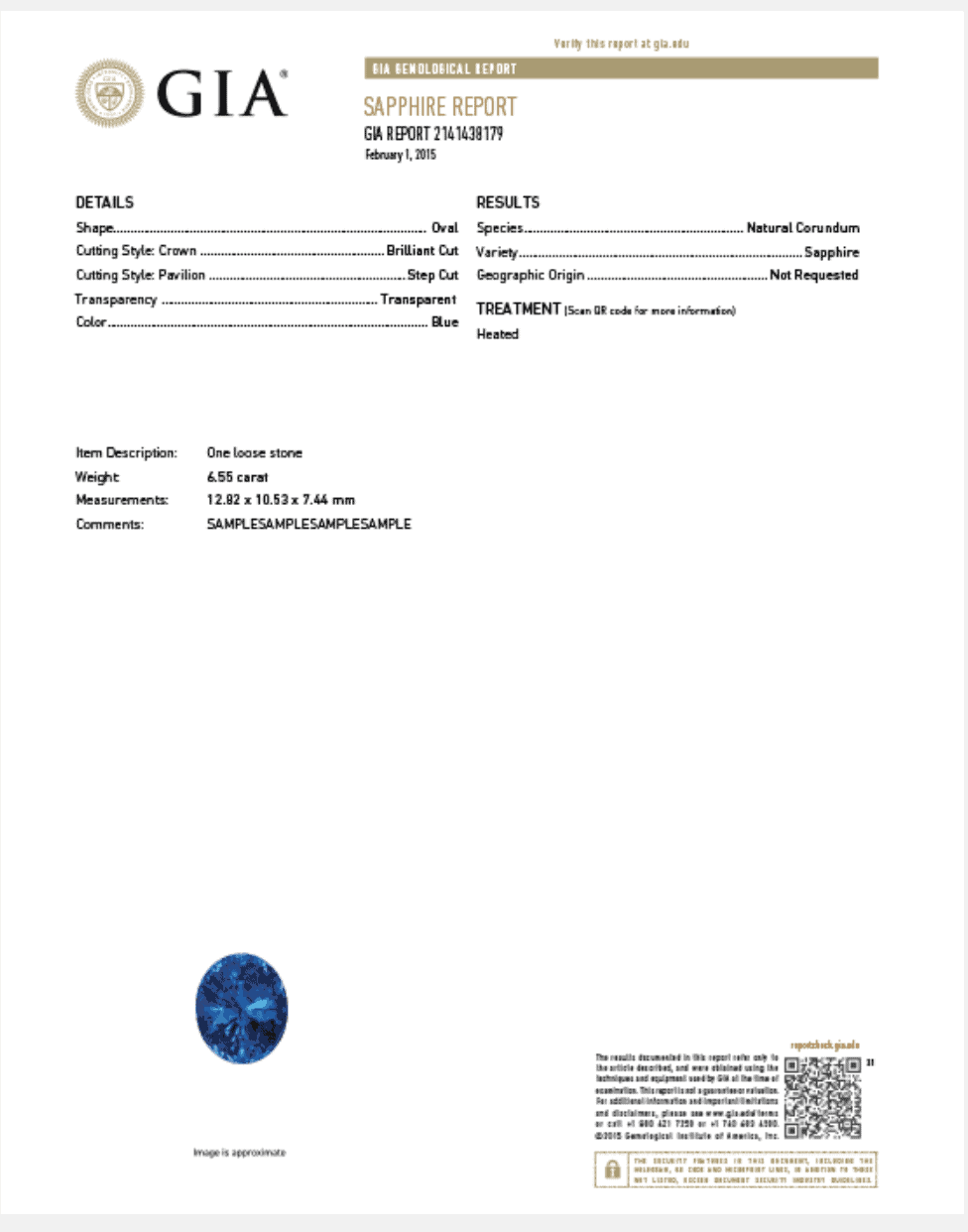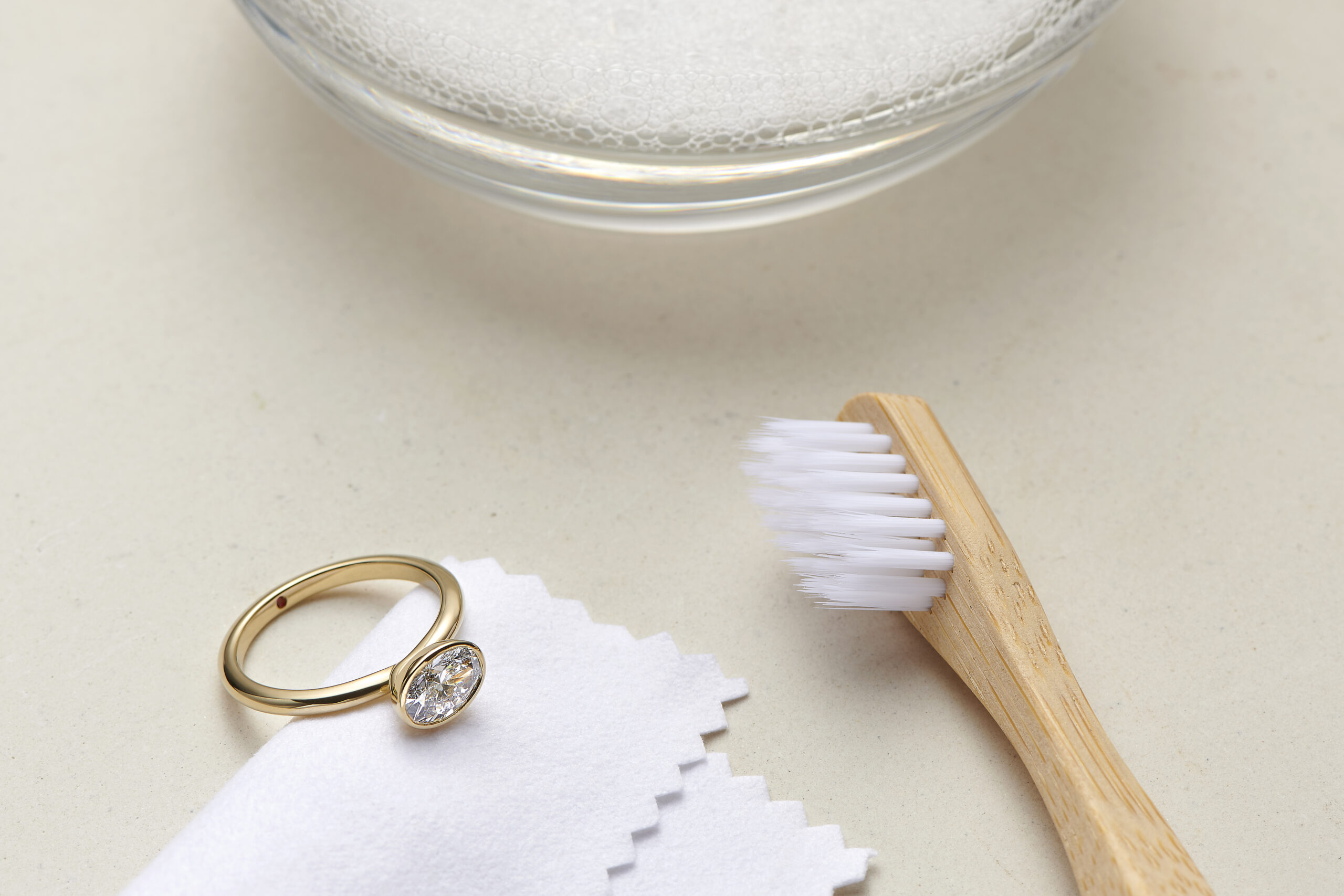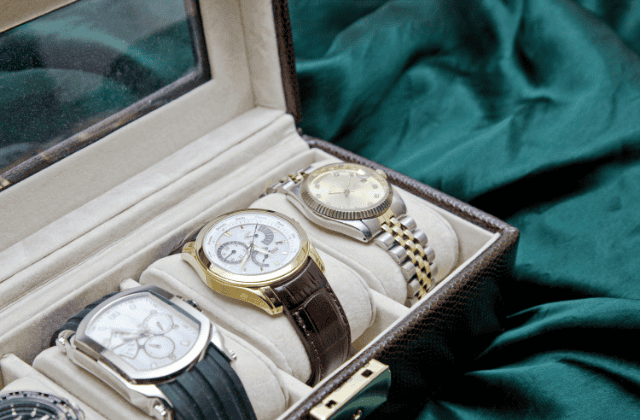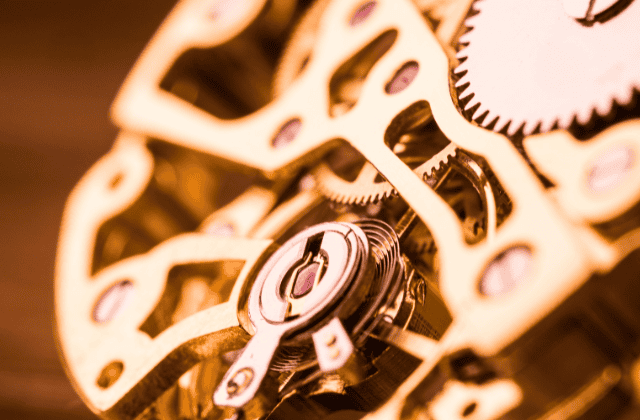Sapphires are some of the most popular gemstone alternative engagement ring today. Jewelry stores tend to have less inventory in their cases of sapphire engagement rings set in gold or platinum.

Thankfully, everyone can access almost every color of sapphire jewelry online.
While there are plenty of places to buy genuine sapphire, there are many fake sapphire stones online too. If you’re not a gemstone expert, you might have a hard time trying to tell if a sapphire is real sapphire or not.
Hopefully this handy guide will help you out!
Main Differences Between Real Sapphires vs Fake Sapphires
The main differences between real vs fake sapphires are:
- Real sapphires are a variety of the mineral corundum, whether untreated or heat-treated, whereas fake sapphires are any other stone claiming to be sapphire but are not corundum.
- Real sapphires are quite hard, registering 9 on the Mohs hardness scale, whereas fake sapphires are much softer and likely to be scratched by glass.
- If you breathe on it, real sapphires fog up but soon clear up, whereas if you breathe on fake sapphires, they stay fogged up for longer.
We’ll get into more detail about these below.
What Are Natural Sapphires?
Sapphire is known as the mineral corundum and occurs in many colors, not just blue. However, there is no such thing as red sapphire. You’ll know red corundum as the July birthstone, ruby.

Sapphire Color Variations credited Taifighta
A sapphire obtains its colors due to impurities that come into contact with the corundum crystals as they grow. It can be colorless too, known as the popular diamond simulant, white sapphire.
Read also: White Sapphire vs Diamonds
Natural sapphires are gem-quality corundum that has been mined from the earth. Natural sapphires can be found all around the world, but high quality sapphires in large carat weights are rare.
Mohs Scale
The mineral scale of hardness is a well-known tool used to indicate a stone’s authenticity and identity. The Mohs hardness scale tells us the scratchability of a mineral. Sapphire and ruby reach a 9 on the Mohs scale, right next to diamond at a 10.
Though despite the closeness of the two stones’ hardness level, the math isn’t the same in the gem world. Diamonds are actually 4x more resistant to scratching than corundum. Sapphires are only 2x harder than topaz, which is an 8 on the scale.
The Mohs scale doesn’t just cover the scratch resistance for a gemstone, but it can help indicate if you have a real sapphire or a fake one. This is done using the infamous “scratch test”.
The scratch test involves taking your supposed sapphire stone and using another mineral to see if it maintains its exterior like a sapphire would. You can do this by taking your stone and scratching against a piece of glass. Glass hits around a 5 on the mohs scale, a far cry from a sapphire at a 9. If you have a lead filled glass sapphire, that glass would leave scratch marks. Real sapphire wouldn’t.
Sapphire Fog Test
The fog test is known as one of the ways to tell if a diamond is real diamond. It can also be done with sapphires. It can also be called the breath test. Simply breathe on the sapphire as if you were attempting to fog up a window like when you were a kid.
If the fog disappears quickly, it’s more likely you’ll have real sapphires on your hands. A glass sapphire or fake sapphire is likely to retain heat longer. Of course, don’t rely on this method to be the only factor in determining if your sapphire is real or a fake one.
Natural Sapphire vs Heat Treated Sapphire Jewelry
Here’s where it can get confusing. You’ll hear the term “heat treated” and “natural sapphires” used in the same sentence. To the average person, a treatment or enhancement done to a stone doesn’t seem very natural, does it?
Some treatments done to different gemstones are acceptable and don’t change its value or price. These are usually for rarer gemstones. Some gemstone treatments do impact price and value, whether it’s slightly or by a lot.
So, are sapphire treatments common?
There’s no other gemstone that receives treatments more than corundum, whether sapphire or ruby gemstones. Yes, some sapphire treatments are acceptable, but they do decrease the value and price.
Read also: How To Tell If a Ruby Is Real
Heat treated natural stones are usually more common and accepted. Heat treatments are used to enhance the color of a natural sapphire stone. Untreated sapphires are some of the most valuable gemstones.
No Evidence of Treatment Natural Sapphire
Natural Sapphire Heat Treated
Inclusions
One of the ways to detect if a sapphire is untreated or not is by looking at its inclusions under a microscope or jeweler’s magnifying glass. Majority of sapphires contain silk rutile inclusions during the formation process. This is how we get star sapphires when corundum is cut en cabochon.
Rutile inclusions melt in sapphires when they receive heat treatment. The result of this is usually a clearer stone with better color. Nearly all corundum receives treatment and a lot of times treatments can be undetectable.
The rutile inclusions leave dissolved tracks behind in the stone when they melt. So if a sapphire doesn’t have dissolved rutile remnants, it’s likely to be a natural untreated sapphire.
Natural Sapphires vs Synthetic Sapphires
Synthetic stones are not fake sapphires. They have the same physical, optical, and chemical composition as natural sapphires. They are subjected to the same conditions it takes for corundum to crystallize beneath the earth.
Read also: Best Sapphire Wedding Bands Online
The average person probably wouldn’t be able to tell a synthetic sapphire from a natural one at first glance. It’s important to take a closer look. If the sapphire is too perfect and free of inclusions, it’s more likely to be a lab created sapphire. But natural and lab created sapphire can look almost the same too, like below. The price of the item should also be an indicator of its origin as lab grown sapphires can be as low as $5 per carat in some circles.
Lab Grown Blue Sapphire
Natural Blue Sapphire
But if you’re buying an expensive sapphire, you should buy only buy your sapphire certified. Certifications ensure that you are getting what you’re paying for. It will also tell you your sapphire stone is natural or lab grown.
Sample GIA Gemstone Report, a Legit Grading Report
What Are Fake Sapphires?
Fake sapphires are any stones that are advertised as real sapphires and aren’t. Fake sapphire can be another less expensive natural stone, they may be glass filled, or entire glass fakes. Gemstone imitations can also be done by composing different materials together, unrelated to actual gemstones.
Composite Sapphires
Lead glass filled sapphires will bring price and value down drastically. They may also be called composite sapphire or composite ruby. Lead glass fillings involve using cobalt lead glass to fill up fissures and cracks that occur in low quality corundum crystals. The cobalt gives it the color to fill these cracks without being detected by the naked eye.
Once the fissures are filled, it can improve both the color and clarity of the stone. This gemstone treatment brings down the value a lot compared to a heat treated ruby.
Cubic Zirconia
Cubic zirconia is a man made diamond imitation. There’s no natural cubic zirconia in the world anymore. Cubic zirconias run about $5 or less per carat. The materials are readily available.
“Sapphire Blue” Cubic Zirconia Ring- Fake Sapphire
Though it’s used as a diamond imitation, cubic zirconia can occur in every color of the rainbow. It’s often used as a blue sapphire substitute for inexpensive birthstone jewelry.
Other Blue Gemstones
Less valuable blue gemstones may be able to pass for sapphire imitations. Blue spinel, blue iolite, and tanzanite are all blue stones that could be passed off as real sapphire but aren’t.
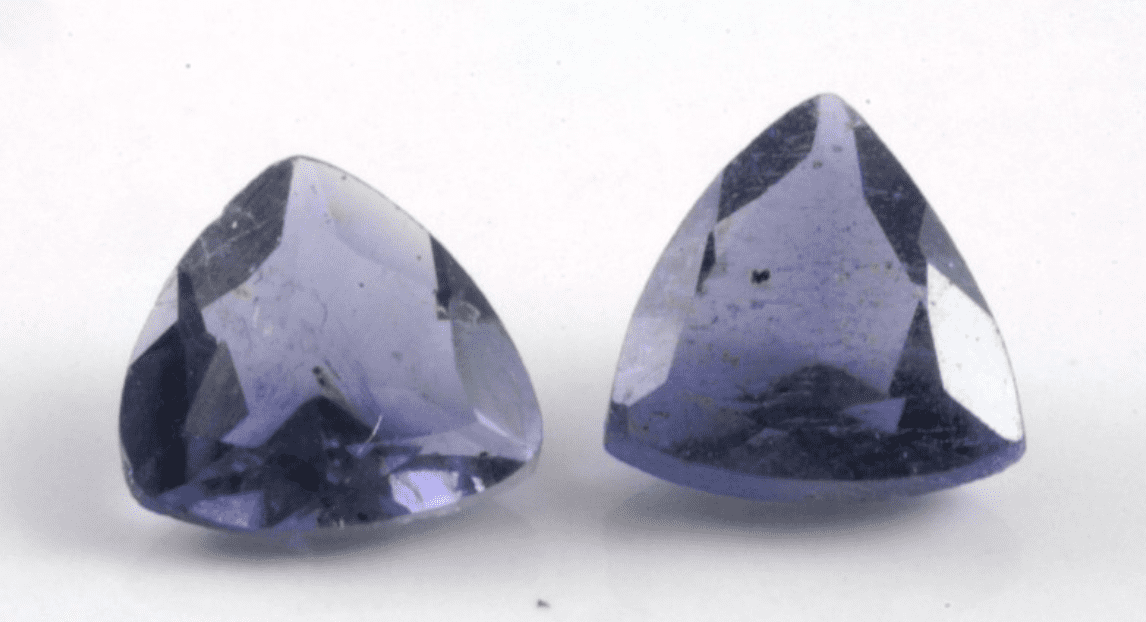
Iolite Gems credited John Brandauer

Tanzanite Earring Studscredited Mannia&Titta
Glass
The most common sapphire fakes out there will be glass. Natural glass can be faceted to look like a gemstone. Glass also has bubbles inside, which can help you sort fakes from the real.

“Pieces of Glass that Will Be Sapphire” credited Big Bead Little Bead
Gemstone Certification
The best way to tell if a sapphire is real is by using gemstone certification. A certified sapphire isn’t easy to come by and command higher prices than sapphires that aren’t certified.
We stress the importance of stone certification when talking about diamonds, but they can be important in certain colored gemstones too. Namely, the precious gemstones like sapphires, rubies, and emeralds.
Conclusion
It’s not too hard to tell if a sapphire is real or not. Real vs fake sapphire can be determined a number of ways using the scratch test, breath test, or by identifying the inclusions through a jeweler’s loupe.
It can be hard for the average person tell the difference between natural and synthetic sapphires. After all, synthetic sapphires are still real sapphires-grown in a lab not in the ground.
Lab created sapphires will look crystal clear when viewed under a magnifying glass. A natural stone will still have small inclusions viewable under magnification. The price of a synthetic sapphire compared to a natural sapphire is much different.
Treatments are common in natural sapphires. A natural sapphire can be untreated or treated. Nearly all sapphires receive treatment. Kashmir blue sapphires are untreated sapphires and can go for hundreds of thousands per carat. Expect a high quality untreated sapphire to be highly expensive.
Though there’s different ways to tell if you have a real sapphire rather than fake stones like blue cubic zirconia or glass sapphires, only one way is the best. Only ever purchase a high quality sapphire with a gemstone certification. A gemstone authenticity certificate from a respected lab in the community will be physical proof that your sapphire isn’t a fake gemstone. It will also indicate if there are any undetectable treatments.
There’s nothing wrong with buying lab created sapphires, natural sapphires, or treated sapphires. If you want a fake one, then go right ahead. My only goal is making sure you know how to tell the difference, just in case you’re looking a specific type of sapphire. Now you know how to tell them apart, so happy sapphire hunting!

